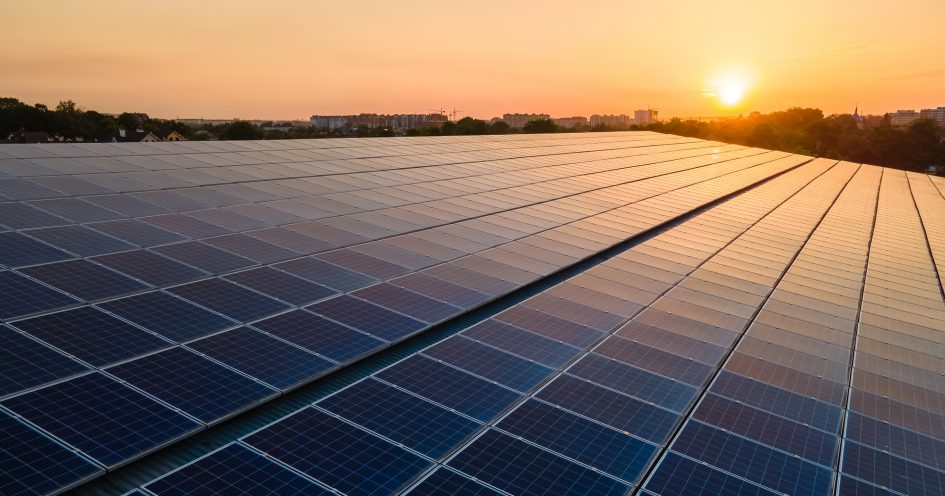As sustainability mandates and the high cost of utilities continue to drive commercial property owners to seek out innovative solutions, those looking to reduce overhead and save on energy should consider harnessing the power of the sun. Photovoltaic solar panels have come a long way in recent years, and the benefits are steadily growing.
“Solar panels continue to come down in cost, and they’re more economically favourable thanks to a range of eligible subsidies and grants,” said Kevin Vogt, Project Engineer with RJC Engineers. “Standardized modules and mounting solutions have made it possible to install them on a greater variety of roofing and standalone structures, including flat roofs, peaked roofs, and vertical surfaces, so the opportunities for this technology have opened up considerably.”

Another leap forward is the fact that data is more readily available for those considering a new solar array. Unlike a few years ago, building owners exploring their options can predetermine the return period on their upfront capital cost by inputting key factors like the size of the array, efficiency of the panel, orientation, and utility costs—meaning there’s far less guess work and fewer questions about solar technology’s effectiveness.
In fact, the possibilities are proving to be quite significant. Case in point: at CF Chinook Centre in Calgary, AB, Vogt and his team recently assisted with the structural aspects of a solar installation project involving 1,900 panels on behalf of Cadillac Fairview and ENMAX Power. For its part, RJC was involved with reviewing the effects of the additional loads on the existing roof structure to find workable solar panel layouts to fit within the allowable weight restrictions and coordinating the mounting of two new rooftop transformers.
Since wrapping in 2021, the project has been deemed “an exciting step forward in the adoption of renewable energy sources” with the new system now acting as a secondary network serving high-density areas of the city. Since May, it has generated over 600,000 kilowatt-hours (kWh) and exported 5,425 kWh back into the grid—which is enough to power a typical-sized home for 10 months.
“Today, the completed arrays cover approximately 53,000 square feet and are successful in reducing the mall’s reliance on purchasing electricity from the traditional grid,” said Vogt. “The mall has now been able to supply electricity back into the greater grid, a first for secondary networks in Calgary.”
Opportunities & limitations
As a large-scale project expected to spur others like it, CF Chinook Centre is a terrific example of what can be achieved using today’s solar technology. But, according to Vogt, smaller buildings can reap some amazing benefits too.
“Solar panels allow electricity usage and expenses to be offset by renewable electricity generated on site,” he said. “Incentives for adding solar panels on new and existing buildings include those provided by local jurisdictions to meet climate strategy targets and those aiding in achieving green building standards such as Net Zero and LEED. These, of course, are helping to bring down the costs.”
That said, there are still some limitations impacting which buildings are best suited to take advantage of the solar movement: the size and orientation of exposed roofs; weight restrictions on the existing structural roof system; and the types of electrical demand of the occupancy may prevent some buildings from qualifying.
“Think of a small building with multiple stepped roofs shaded by adjacent buildings and exposed to large snow drifts,” Vogt said. “With that geometry, or if the building requires uninterrupted power supply for critical equipment, chances are it will not see a high return on investment with solar compared to a large warehouse with a single flat roof and plenty of south exposure.”
But for those that are feasible, the best time to consider adding solar to a roof is when a re-roofing program is scheduled.
According to Vogt, “Often when an older gravel ballasted roof is replaced with a lighter roofing system, the reserve capacity in the roof structure can accommodate the additional weight of a new solar array. Installing solar on a new or recently replaced roofing system also prevents the panels from needing to be temporarily removed in the short term due to re-roofing.”
If interested in learning more about solar panels on structures and considerations for your building, please visit www.rjc.ca or contact Kevin Vogt directly at: kvogt@rjc.ca






